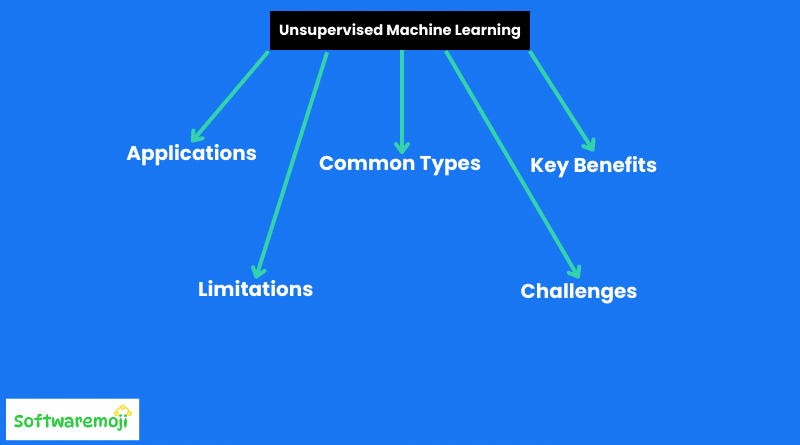
✅Unsupervised Learning in Machine Learning:-
Unsupervised learning is a prominent technique in the field of machine learning, where models are trained without the need for labeled data. This allows algorithms to identify hidden patterns, trends, and structures in unlabelled datasets. In the context of unsupervised learning can be utilized to optimize content discovery, enhance search ranking strategies, and improve the understanding of user behavior.
✅What is Unsupervised Learning?
Unsupervised learning in refers to the process where machine learning algorithms analyze website data and search engine metrics to uncover meaningful patterns or trends without human intervention. This form of learning can help identify user intent, categorize content, and group similar keywords and topics.
✅Key Benefits :
- Keyword Clustering: By grouping similar keywords, unsupervised learning helps experts identify high-performing clusters of keywords, optimizing on-page and off-page strategies.
- Content Optimization: Algorithms can detect emerging content trends and suggest topic clusters for creating more targeted content, improving search engine rankings.
- User Behavior Analysis: Unsupervised learning helps to segment users based on browsing behaviors, allowing for personalized marketing and content strategies.
✅Common Types of Unsupervised Learning Algorithms :
Unsupervised Learning in Machine Learning: A Comprehensive Overview-2025:
1. Clustering Algorithms :
- K-Means Clustering: This algorithm groups keywords or content topics based on similarity, allowing specialists to identify which keywords should be grouped together in content creation or keyword targeting.
- Hierarchical Clustering: This type of clustering helps identify the relationships between different topics on a website, allowing experts to organize content and target multiple keyword clusters effectively.
2. Dimensionality Reduction :
- Principal Component Analysis (PCA): Used for reducing the complexity of large keyword datasets while preserving the essential relationships between them. This can be valuable when handling large campaigns with thousands of keywords.
3. Anomaly Detection:
- Fraudulent Behavior Detection: By analyzing user traffic data, unsupervised learning can detect unusual patterns, helping to identify potential click fraud or bot activity that could harm your website’s performance.
4. Topic Modeling :
- Latent Dirichlet Allocation (LDA): Used to identify hidden topics in large text datasets (e.g., articles, blog posts), helping teams uncover potential content opportunities based on untapped topics or trending discussions.
✅Practical Applications of Unsupervised Learning :
- Content Segmentation: By clustering similar pieces of content together, specialists can ensure that similar topics are linked, improving internal linking strategies and increasing a website’s topical authority.
- Improved SERP Features Identification: Unsupervised learning can detect patterns in search results, allowing experts to understand and predict the types of content likely to appear in rich snippets, knowledge panels, or other featured snippets.
- Identifying User Intent: By analyzing search queries and identifying hidden patterns, unsupervised learning can help determine the underlying intent behind certain keywords, enabling more targeted content creation that matches user needs.
- Competitor Analysis: Unsupervised learning can group competitors by similarities in their content or keyword strategy. This helps professionals recognize industry trends and identify new opportunities for ranking improvements.
✅Challenges and Limitations of Unsupervised Learning :
- Data Interpretation: One of the main challenges of unsupervised learning is the need for human intervention to interpret the results. Since there are no labels in the dataset, it can be difficult to fully trust the algorithm’s clustering or segmentation results without further analysis.
- Unpredictability: Since the patterns discovered by unsupervised learning are not pre-defined, the results can sometimes be unexpected, requiring the expert to adjust strategies based on new findings.
- Data Quality: The effectiveness of unsupervised learning heavily relies on the quality and volume of the data. Incomplete or noisy data can lead to misleading results, which could negatively affect strategies.
✅Conclusion:
The Role of Unsupervised Learning in Modern:
Unsupervised learning is a powerful tool for uncovering hidden patterns in large datasets. By applying this technique in professionals can optimize their strategies by clustering similar content, understanding user intent, and identifying emerging trends. While there are challenges in interpreting and trusting unsupervised results, the ability to work with unlabelled data makes it an essential tool for driving innovation and improving website rankings in search engines.
Incorporating unsupervised learning into your strategy can help improve content relevance, user engagement, and ultimately, search engine performance. By leveraging advanced machine learning algorithms, you can create data-driven strategies that adapt to changing trends and search engine algorithms.
